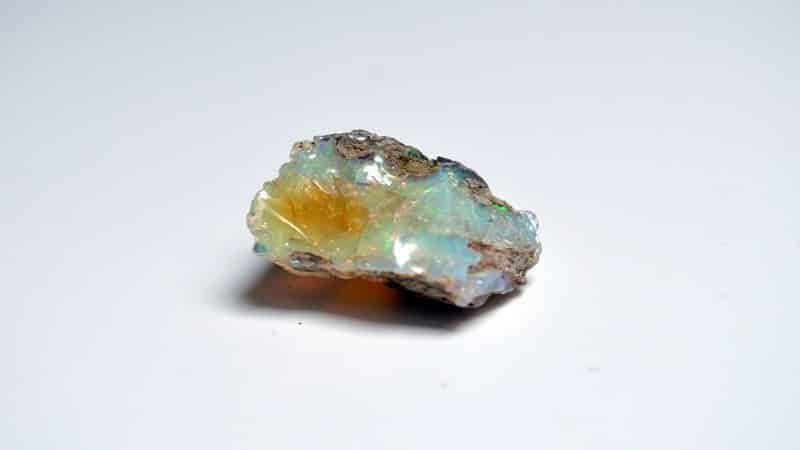How to Tell If an Opal Is Real

Table of Contents
Whether you are a jewelry collector or a gemstone aficionado, you must be keen on acquiring real gemstones. But have you mastered the art of telling a real gemstone apart from a fake one?
Nowadays, unfortunately, there is a lot of forgery going around. While opal is a naturally occurring, beautiful gemstone, vendors tend to offer synthetic copies and imitations of it than the real deal.
Therefore, whether you are purchasing readymade jewelry pieces or an organic opal by itself, you need to be careful. Buyers need to be wary of the stone’s synthetic copies now readily available. These copies are so difficult to tell apart that it takes practice and attention to detail.
Hence, here we have compiled a list of ways and some tips that can help you tell if an opal is real or fake.
1. Solid Opal vs. Doublets & Triplets
First and foremost, you need to understand the difference between solid, doublet, and triplet opal formations if you are on a hunt for buying opals. These formations don’t need to be completely fake unless the actual gemstone is unreal. Instead, doublets and triplets are a layering format of the stone. The structure is created using a combination of real opal and synthetic material to create an impression of solid opal. This allows jewelry makers to place the stone in a fixed and secure position into the ornament.
2. Opal Body Tone
Now that you are aware of an opal’s layering structure, it will be easier to note if it is a solid opal or not. Thus, one of the first ways you can utilize to check if your opal is a real soli opal or not is to check its body tone. If the gemstone is transparent or has a white body tone, it is good news for you as it is a genuine solid opal. However, if you can notice slight darkening underneath, it is probably a doublet or a triplet with an artificial backing to secure it in place.
3. 360° View of the Opal
Quite obviously, if the opal is layered, you tell by doing a 360° round viewing of the stone. The side view should be able to show distinct layers that separate the stone from its artificial surface. Furthermore, the back of the opal is also an aspect that helps in identification. If it has a darker undertone with a hard coating, it is not a solid opal but a doublet. Similarly, a clear glass layering on top of the opal is a sign of a triplet.
4. Cloudy Appearance
An obvious change in the appearance of the opal stone is that it starts getting cloudy. The reason behind this notion is that as the opal is either layered in a doublet or a triplet formation, it is stuck to the surface using glue. When you wear the stone for instance, in a ring, and your hand goes underwater for long, the glue starts to disintegrate. This causes the layers to deteriorate and make the surface appear cloudy because the water has been immersed in the layers.
5. Light & Color
Although this is not something, you can recognize with your naked eye and magnification surely helps. As synthetic opals are man-made, there is a knack for regularity in color. Therefore, if you look at an opal under proper magnification, you would see that the natural gemstone does not have a regular color pattern in its tone. Similarly, a synthetic opal does not shine or glow brightly due to fluorescence when a UV light is shone over it. Being a solid man-made material depiction of a gemstone, it doesn’t allow light to pass through.
6. Structural Identification
A real opal will always weigh heavier than a synthetic one. As synthetic opals have lower density, they are relatively lighter than the real deal. That’s why you would have seen many people place the stone on their palms and try to weigh it by bouncing it to check its density. Moreover, synthetic opals are porous. A naturally occurring organic opal is, by all means, solid and genuine and does not show any spongy, permeable structural qualities.
7. Knowledge & Education
It is in best practices to read up about opals, how they are formed, what the many types are and how each of these types looks like. If you are more educated and knowledgeable on the subject matter, the chances are that you will be able to better recognize a real opal. Also, always make sure to compare what you have bought to what you have usually seen and trust your knowledge to recognize a genuine opal over a fake one.
Our Final Thoughts
Opals are quite an affordable gemstone. Despite that, vendors try to forge what they are selling and exchange a fake gemstone for the real one. However, now you know about some basics of how to tell if your opal is real. Hopefully, these tips and ways would help you in purchasing a genuine opal for yourself.